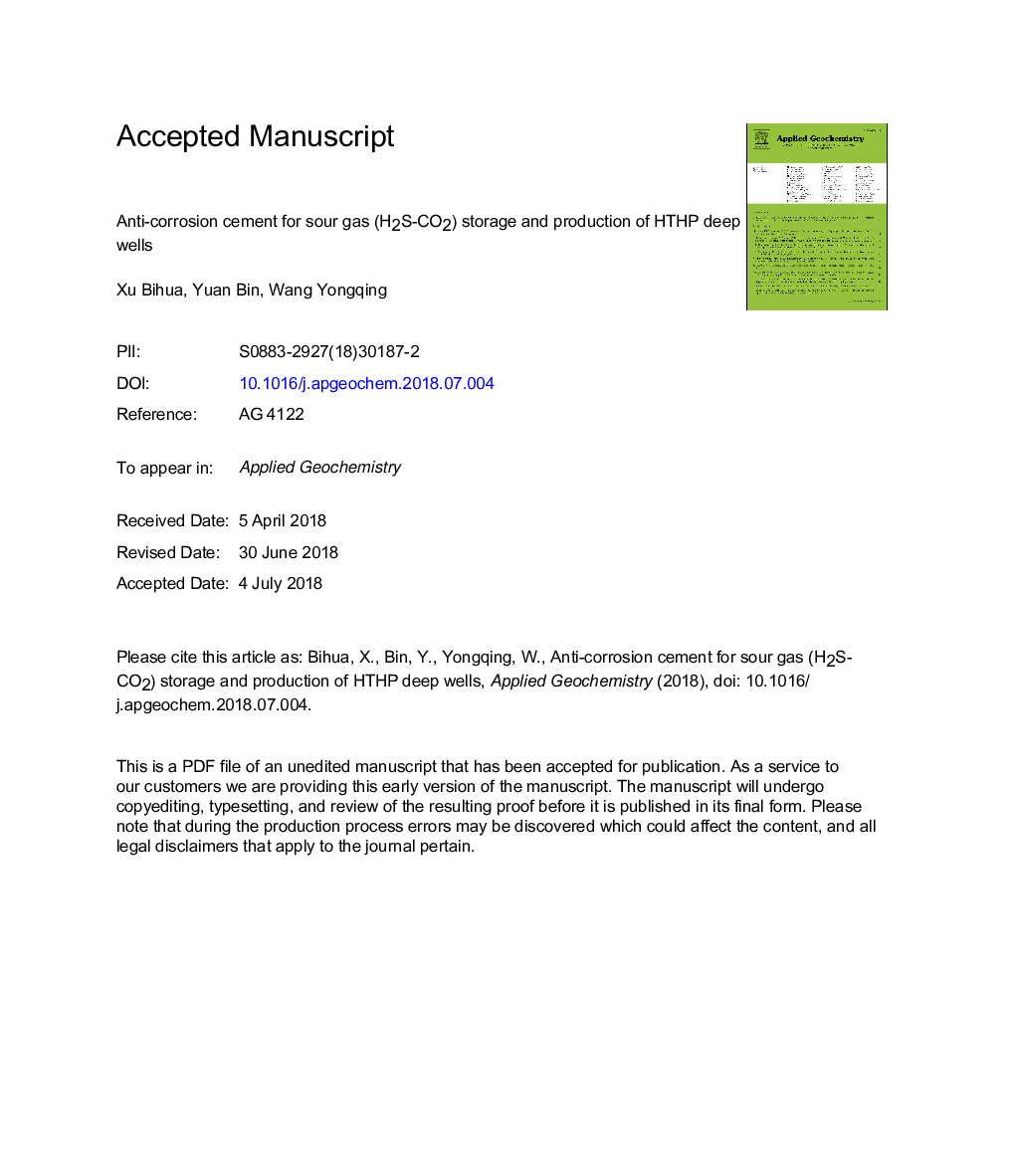| Article ID | Journal | Published Year | Pages | File Type |
|---|---|---|---|---|
| 8863037 | Applied Geochemistry | 2018 | 31 Pages |
Abstract
A wellbore cement sheath exposed to an H2S-CO2 rich environment for long time will lose its general purpose (zone isolation, segregation, pipe strength improvement, etc.) due to corrosion, especially under high-temperature and high-pressure (HTHP) formation conditions. H2S-CO2 attacks cement by causing leaching, expansion, and dissolution effects. Therefore, this research work intends to investigate the corrosion-resistant properties of corrosion-resistant additive (CRA) for Fe2O3-amended cement. The experimental results indicate that the well cement with CRA has lower original permeability and calcium hydroxide (CH) content than cement without CRA; even after corrosion, it has higher compressive strength, lower permeability and smaller corrosion depth than that of cement without CRA. CRA can react with CH and high-Ca/Si hydration products to generate low-Ca/Si hydration products such as xonotlite and tobermorite. CRA cement has superior corrosion resistance because of reduced its original permeability due to film formation and filling effects and through the reduction of CH to achieve low-Ca/Si hydration products.
Keywords
Related Topics
Physical Sciences and Engineering
Earth and Planetary Sciences
Geochemistry and Petrology
Authors
Xu Bihua, Yuan Bin, Wang Yongqing,
